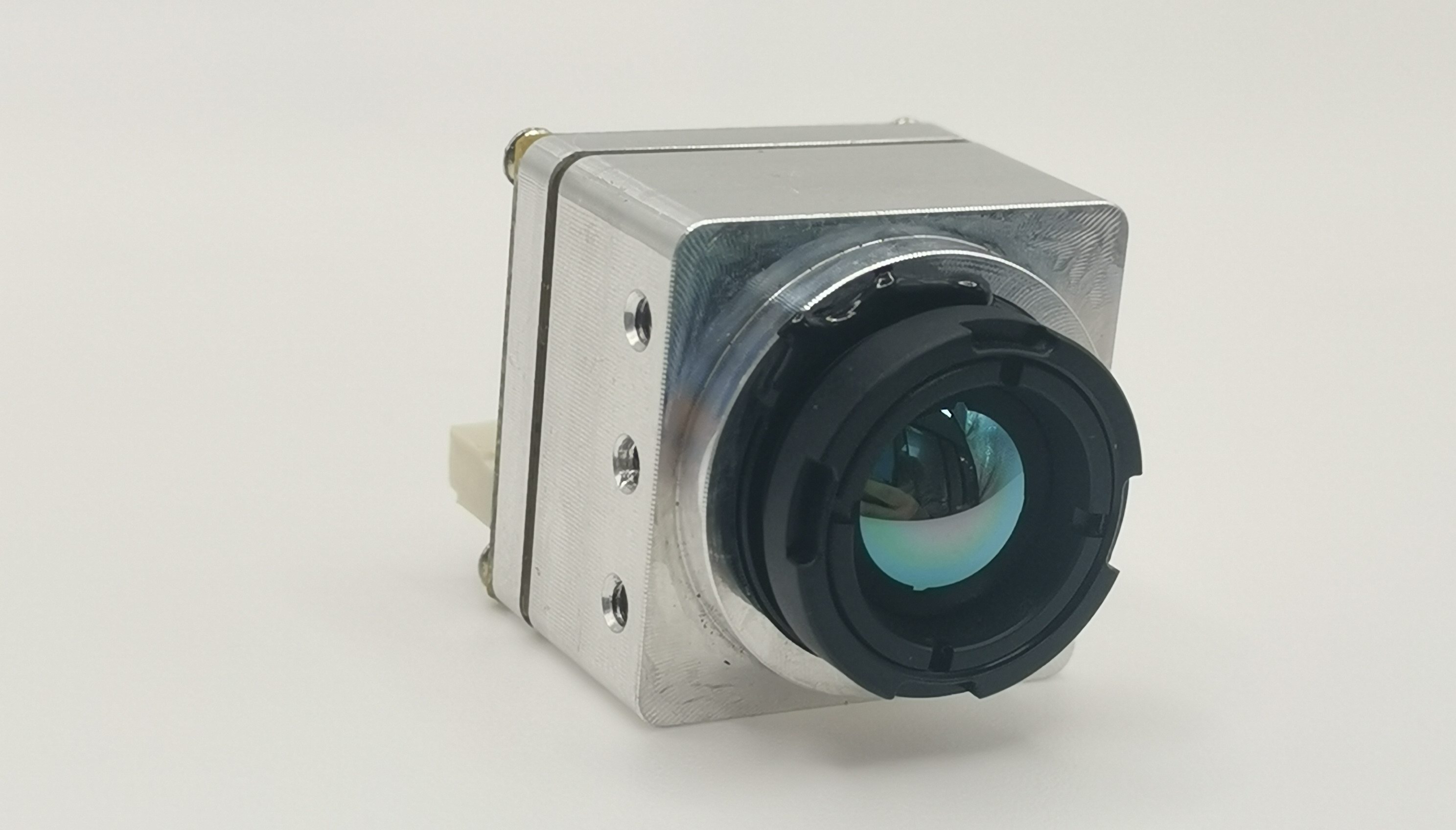The Advantages of Analog FPV Thermal Cameras for DJI Drones

Discovering the World of DJI Drones and Thermal Imaging
As a drone enthusiast, I have always been fascinated by the technological advancements in DJI drones. These unmanned aerial vehicles have revolutionized various industries with their exceptional capabilities. Let's delve into a brief introduction to DJI drones and explore the significance of thermal imaging in conjunction with these innovative devices.
A Brief Introduction to DJI Drones
What Makes DJI Drones Stand Out
DJI has set itself apart in the drone industry through its commitment to innovation and quality. The company's drones are renowned for their cutting-edge features, including advanced stabilization systems, high-quality cameras, and intuitive controls. Moreover, the seamless integration of intelligent flight modes and obstacle avoidance technology distinguishes DJI drones from other competitors.
The Evolution of DJI Drones
Over the years, DJI drones have undergone remarkable evolution, transitioning from basic aerial platforms to sophisticated aerial imaging tools. The incorporation of state-of-the-art sensors, extended flight times, and enhanced durability has propelled these drones to the forefront of the market. Additionally, advancements in software capabilities have empowered users with unparalleled creative freedom and control over their aerial photography and videography endeavors.
The Significance of Thermal Imaging
Understanding Thermal Imaging
Thermal imaging is a groundbreaking technology that enables the visualization of heat signatures emitted by objects or living beings. By detecting infrared radiation, thermal cameras can create detailed images based on temperature variations. This capability provides invaluable insights across numerous applications, ranging from industrial inspections to wildlife monitoring.
Applications of Thermal Cameras
The integration of thermal cameras with DJI drones has unlocked a myriad of possibilities across diverse sectors. From identifying energy inefficiencies in buildings to aiding in search and rescue missions, thermal imaging has proven instrumental in enhancing operational efficiency and safety measures.
Exploring the Benefits of Thermal Cameras on DJI Drones
As we delve into the realm of thermal imaging, it becomes evident that the integration of thermal cameras with DJI drones offers a plethora of advantages across various domains. Let's explore how these cutting-edge technologies enhance night vision capabilities, contribute to improved search and rescue operations, and boost agricultural productivity.
Enhanced Night Vision Capabilities
Seeing Beyond the Visible Spectrum
The utilization of thermal cameras extends our vision beyond what is perceptible to the naked eye. By detecting heat signatures, these cameras enable us to visualize our surroundings in low-light conditions or complete darkness. This enhanced night vision capability equips drone operators with the ability to navigate challenging environments and capture valuable data even when traditional visual methods fall short.
Real-World Applications of Night Vision
The practical applications of enhanced night vision facilitated by thermal cameras are diverse and impactful. From surveillance and security operations to wildlife monitoring, the ability to detect heat signatures empowers users with an unparalleled advantage. Furthermore, in sectors such as law enforcement and infrastructure maintenance, this technology plays a pivotal role in ensuring safety and operational efficiency during nocturnal activities.
Improved Search and Rescue Operations
How Thermal Cameras Make a Difference
In search and rescue missions, time is often of the essence, and having access to advanced tools can be life-saving. The integration of thermal cameras with DJI drones significantly enhances search capabilities by enabling responders to identify heat-emitting sources from a distance. This capability expedites the location of missing persons or individuals in distress, thereby increasing the likelihood of successful outcomes in critical situations.
Success Stories of Rescues with Thermal Imaging
Numerous success stories underscore the invaluable role played by thermal imaging in search and rescue operations. From locating lost hikers in rugged terrains to swiftly identifying survivors in disaster-stricken areas, thermal cameras have proven instrumental in saving lives. These accounts serve as compelling testaments to the indispensable nature of thermal technology when deployed for humanitarian purposes.
Boosting Agricultural Productivity
Monitoring Crop Health with Thermal Imaging
Agriculture stands to benefit significantly from the integration of thermal cameras on DJI drones, particularly concerning crop management. By capturing thermal data from fields, farmers can gain insights into plant health based on temperature differentials. This proactive approach allows for early detection of stress factors or anomalies that may affect crop yield, enabling timely intervention measures.
Precision Agriculture with DJI Drones
The synergy between precision agriculture techniques and thermal imaging presents an opportunity for optimized resource allocation and sustainable farming practices. Equipped with thermal capabilities, DJI drones can provide farmers with detailed spatial information about their fields, facilitating targeted irrigation strategies and precise application of fertilizers or pesticides based on specific crop requirements.
My Personal Journey with Analog FPV Thermal Cameras
As an avid drone enthusiast, my journey with analog FPV thermal cameras has been nothing short of exhilarating. The decision to upgrade from traditional visual systems to thermal imaging technology marked a significant turning point in my aerial photography and videography endeavors.
The Decision to Upgrade
Comparing Analog and Digital FPV Systems
When contemplating the transition to thermal imaging, I meticulously evaluated the differences between analog and digital FPV systems. While digital systems offer high-definition visuals, the inherent capability of thermal cameras to detect heat signatures in various environments captured my attention. The prospect of capturing unseen details through thermal imagery resonated deeply with my passion for exploration and discovery.
Why I Chose an Analog FPV Thermal Camera
Amidst the array of options available, I ultimately opted for an analog FPV thermal camera due to its seamless integration with my existing drone equipment. The compatibility and reliability offered by analog systems aligned perfectly with my preference for a streamlined and efficient workflow. Additionally, the cost-effectiveness and proven track record of analog technology further solidified my decision, ensuring that I could harness the full potential of thermal imaging without compromising on quality or performance.
Memorable Experiences and Challenges
Successes in Night Photography
Venturing into night photography with the aid of thermal cameras opened up a realm of creative possibilities that surpassed my initial expectations. Capturing ethereal landscapes illuminated solely by heat signatures provided a surreal perspective that transcended conventional visual imagery. The ability to document nocturnal wildlife activities and celestial phenomena through thermal vision added a layer of depth and intrigue to my portfolio, garnering admiration from fellow enthusiasts and photographers alike.
Overcoming Obstacles in Thermal Imaging
Embracing thermal imaging also presented its fair share of challenges, compelling me to refine my technical skills and adapt to new methodologies. Navigating through varying temperature differentials and optimizing image calibration demanded meticulous attention to detail. Moreover, understanding the nuances of interpreting thermal data effectively required continuous learning and experimentation. However, each obstacle served as a stepping stone towards honing my proficiency in utilizing thermal cameras as indispensable tools for aerial exploration.
Making the Most Out of Your DJI Drone with a Thermal Camera
Now that you have equipped your DJI drone with a cutting-edge thermal camera, it's time to maximize its potential and explore the myriad of opportunities offered by thermal imaging technology. Whether you are a novice enthusiast or an experienced user, there are essential tips and advanced techniques that can elevate your aerial photography and videography endeavors.
Tips for Beginners
Choosing the Right Thermal Camera
When considering a thermal camera for your DJI drone, it is crucial to prioritize factors such as resolution, temperature range, and compatibility with your specific drone model. Opt for a thermal camera that aligns with your intended applications, whether it be night vision capabilities, search and rescue operations, or agricultural monitoring. Additionally, consider the weight and dimensions of the camera to ensure seamless integration with your drone without compromising its flight performance.
Getting Started with Thermal Imaging
As a beginner venturing into thermal imaging, familiarize yourself with the fundamental principles of interpreting thermal data. Understand how temperature differentials manifest in various scenarios and practice capturing thermal imagery in diverse environments. Moreover, acquaint yourself with the software or applications required to process and analyze thermal data obtained from your DJI drone equipped with a thermal camera.
Advanced Techniques for Experienced Users
Fine-Tuning Your Thermal Imaging Skills
For experienced users seeking to refine their proficiency in thermal imaging, delve into advanced techniques such as calibrating temperature scales and optimizing image contrast. Experiment with different color palettes to enhance the visualization of heat signatures based on personal preferences and specific environmental conditions. Furthermore, explore methods for integrating thermal data into existing mapping or modeling software to derive comprehensive insights from aerial thermography.
Creative Uses of Thermal Cameras in Various Fields
Beyond conventional applications, unleash your creativity by exploring innovative uses of thermal cameras across diverse fields. From artistic endeavors that leverage thermal imagery to capture unique perspectives on natural landscapes to scientific research projects that utilize thermal data for ecological studies, there are endless possibilities for leveraging the capabilities of thermal cameras on DJI drones. Collaborate with professionals from different disciplines to discover new avenues for applying thermal imaging technology in unconventional yet impactful ways.
Wrapping Up
The Future of Thermal Imaging with DJI Drones
As we look ahead, the future of thermal imaging with DJI drones holds immense potential for further advancements and innovations. Emerging trends and technologies are poised to redefine the capabilities and applications of thermal cameras integrated with these cutting-edge aerial platforms.
Emerging Trends and Technologies
The evolution of thermal imaging technology continues to unfold, paving the way for enhanced resolution, extended temperature ranges, and augmented data processing capabilities. Advancements in sensor technology and image processing algorithms are driving the development of more compact and lightweight thermal cameras, ensuring seamless integration with a diverse range of DJI drone models. Furthermore, the convergence of thermal imaging with artificial intelligence (AI) and machine learning is anticipated to revolutionize predictive analytics and automated anomaly detection in various industries.
My Final Thoughts and Advice
In conclusion, the integration of analog FPV thermal cameras with DJI drones has undoubtedly expanded the horizons of aerial photography, videography, and data acquisition. The remarkable benefits offered by thermal imaging technology empower enthusiasts, professionals, and organizations to explore new frontiers and address challenges across multiple domains.
As an advocate for leveraging technological innovations responsibly, my advice is to embrace continuous learning and skill development in utilizing thermal cameras on DJI drones. Stay informed about industry developments, participate in workshops or training programs focused on thermal imaging applications, and collaborate with experts to exchange insights and best practices.
Incorporate thermal imaging into your creative pursuits or professional endeavors thoughtfully, considering ethical considerations and privacy regulations. Strive to contribute positively to fields such as environmental conservation, public safety, infrastructure maintenance, and scientific research through the judicious application of thermal technology.
Embrace the journey of discovery that awaits with analog FPV thermal cameras on DJI drones – a journey illuminated by the unseen yet impactful realm of heat signatures.
See Also
Revolutionary Thermal Imaging Camera for Drones and Surveillance
Contact Us: Ms. Coco Huang
E-mail: sales@iasun.cn
WhatsApp/Wechat: +86 13510421923

